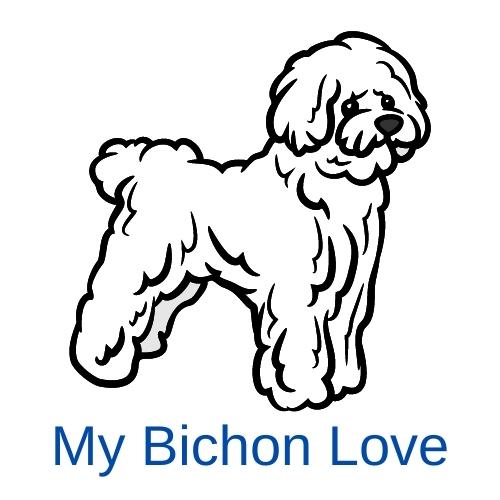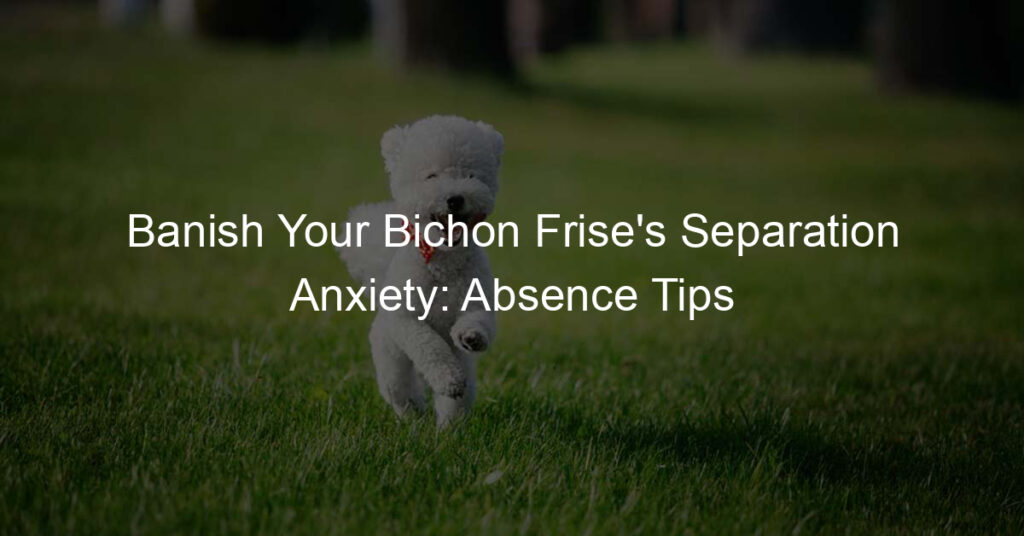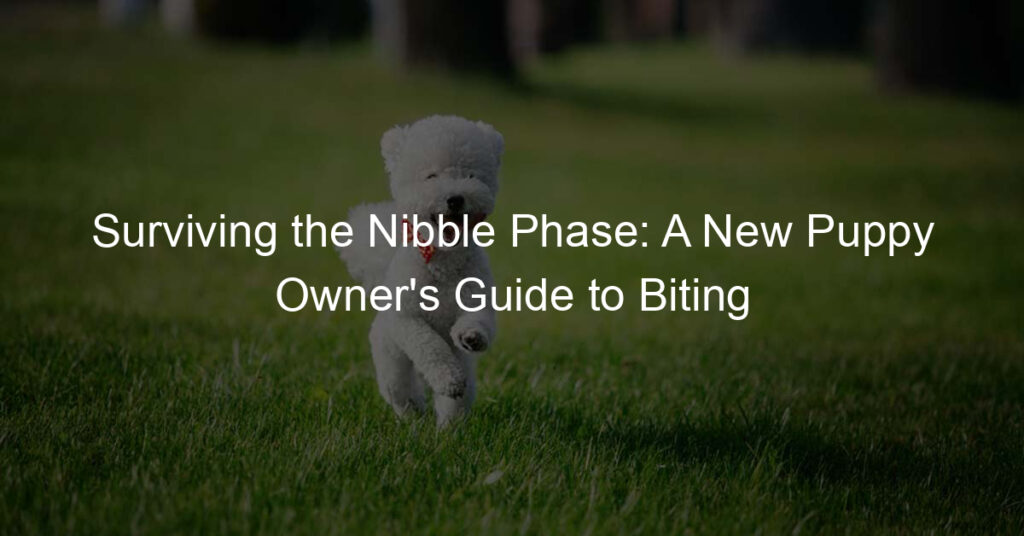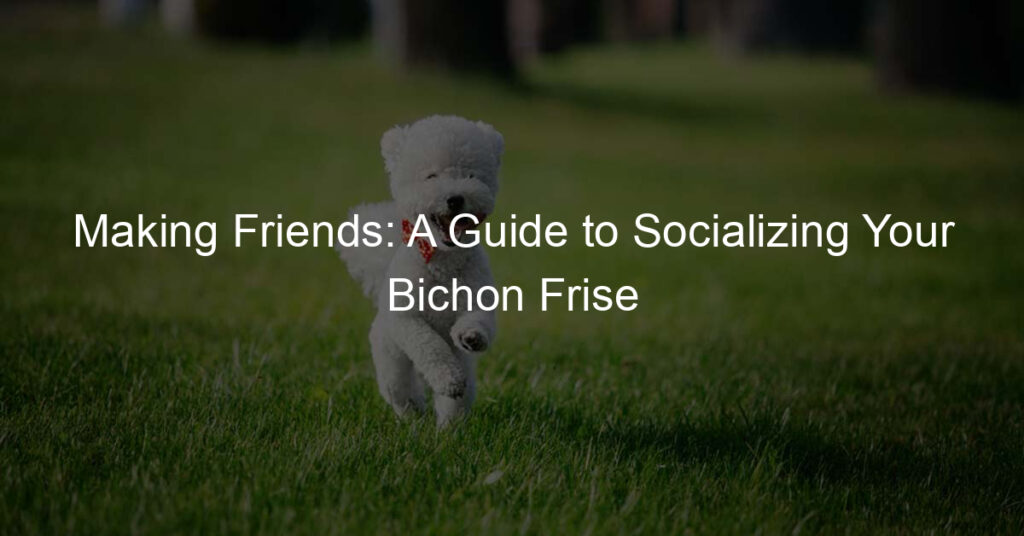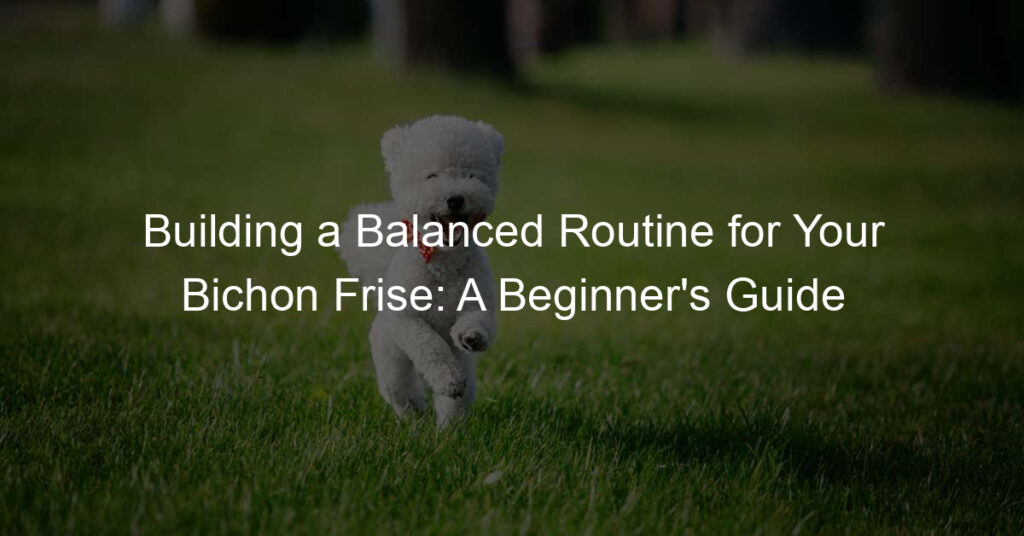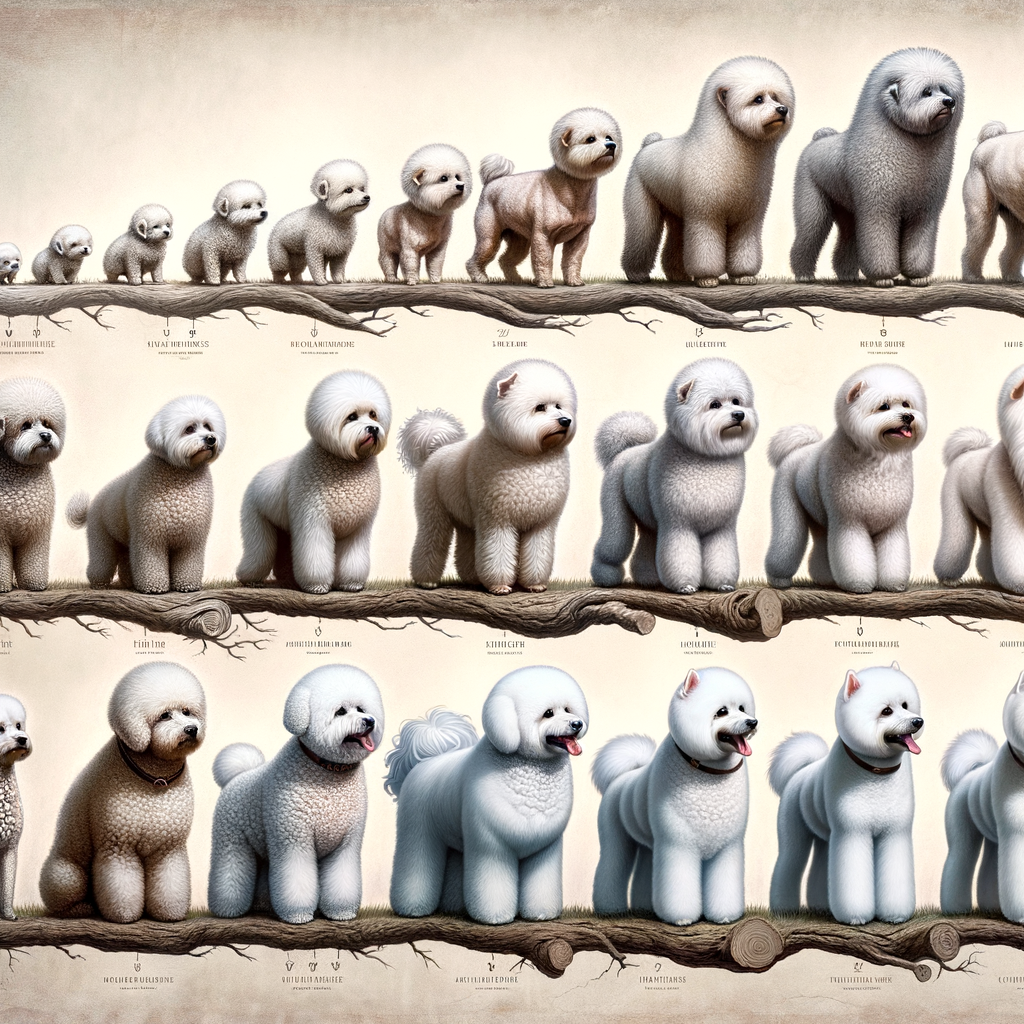
Introduction to the Bichon Frise Breed
The Bichon Frise is a breed that is loved by many for its charming and cheerful nature. This breed is known for its fluffy white coat and its friendly, playful personality. In this section, we will provide an overview of the Bichon Frise breed and discuss its unique characteristics.
- Overview of the Bichon Frise breed
- Characteristics of the Bichon Frise
The Bichon Frise, often referred to as a ‘Bichon’, is a small breed of dog that originated in the Mediterranean region. They are known for their distinctive fluffy white coat, which gives them a teddy bear-like appearance. Bichons are part of the Non-Sporting Group, according to the American Kennel Club.
Bichons are typically very friendly and sociable dogs. They get along well with other animals and people, making them excellent companions. They are also known for their intelligence and agility, which makes them great participants in obedience and agility competitions.
The Bichon Frise is a small dog, typically weighing between 10 to 20 pounds and standing about 9 to 12 inches tall at the shoulder. They have a round head, black eyes, and a tail that curls over the back. Their most distinctive feature is their fluffy white coat, which is hypoallergenic and requires regular grooming to keep it looking its best.
Bichons are known for their cheerful and playful personality. They are highly intelligent and trainable, but can also be stubborn at times. They are generally good with children and other pets, making them a great choice for families. Bichons are also known for their longevity, with many living into their late teens.
In the following sections, we will delve deeper into the history and evolution of the Bichon Frise breed, providing fascinating insights into how this breed has developed over the years.
The Bichon Frise History
Delving into the history of the Bichon Frise, we uncover a fascinating journey that takes us back centuries. This breed has a rich and intriguing past that has shaped its characteristics and popularity today.
Origins of the Bichon Frise
Let’s take a step back in time to explore the origins of the Bichon Frise.
- Early history and origin of the Bichon Frise
- Centuries old Bichon Frise: A brief overview
The Bichon Frise, also known as the “curly lap dog,” has its roots in the Mediterranean region. The breed is believed to have descended from the Barbet, a water spaniel. Sailors used these dogs as companions during their long sea voyages, and they were often traded or sold in different ports, which helped spread the breed across different countries.
The Bichon Frise breed has been around for centuries. In fact, it was a favorite among the European nobility in the 13th century, especially in France. The breed’s popularity continued to grow over the centuries, and they were often featured in paintings by famous artists such as Francisco de Goya and Titian. Despite their royal status, Bichon Frises were also known as a commoner’s dog, loved for their friendly and playful nature.
In conclusion, the Bichon Frise has a deep-rooted history that dates back centuries. From being a sailor’s companion to a beloved pet of the nobility, this breed has always been cherished for its charming personality and adorable looks.
Bichon Frise in the Middle Ages
The Middle Ages were a significant period in the history of the Bichon Frise breed. These small, fluffy dogs played a unique role during this time and underwent significant development.
- Role of Bichon Frise in the Middle Ages
- Historical development of Bichon Frise during this period
During the Middle Ages, the Bichon Frise was a beloved companion of the nobility. These dogs were often seen in the courts of France and Spain, where they were pampered and adored by the royals. They were known for their charming personalities and their ability to perform tricks, which made them popular entertainers at court gatherings.
The Middle Ages was a time of significant development for the Bichon Frise breed. During this period, breeders began to selectively breed these dogs for their small size and fluffy white coats. This led to the development of the modern Bichon Frise that we know today.
| Fact | Details |
|---|---|
| Role | Companion of the nobility and court entertainer |
| Development | Selective breeding for small size and fluffy white coats |
In conclusion, the Middle Ages were a crucial time in the history of the Bichon Frise. These dogs were not only beloved companions of the nobility but also played a key role as entertainers. Furthermore, this period saw significant development in the breed, leading to the Bichon Frise we know and love today.
Bichon Frise Breed Evolution
The Bichon Frise is a breed that has seen significant evolution over the centuries. From its origins in the Mediterranean to its current status as a beloved companion dog, the Bichon Frise has undergone many changes in both appearance and temperament.
Evolution of Bichon Frise from 16th to 19th Century
Let’s take a closer look at the evolution of the Bichon Frise breed from the 16th to the 19th century.
- Changes in Bichon Frise breed over the centuries
- Impact of societal changes on the Bichon Frise breed development
The Bichon Frise breed has seen many changes over the centuries. In the 16th century, these dogs were primarily used as companions for sailors and were known for their hardy nature and ability to adapt to different environments. Over time, the breed became more refined and was often seen in the courts of European royalty. By the 19th century, the Bichon Frise had become a popular pet among the middle class, known for its friendly demeanor and fluffy white coat.
Societal changes have also played a significant role in the development of the Bichon Frise breed. For instance, during the Industrial Revolution in the 19th century, many people moved from rural areas to cities. This shift led to changes in the types of dogs people wanted. Smaller, more companionable dogs like the Bichon Frise became more popular. This trend continued into the 20th century, with the Bichon Frise becoming a favorite among urban dwellers.
In conclusion, the Bichon Frise breed has seen significant evolution over the centuries, influenced by both changes in society and shifts in human lifestyle. From a hardy seafaring dog to a refined companion for royalty and finally a beloved pet for the middle class, the Bichon Frise has proven to be a versatile and adaptable breed.
20th Century to Present: Bichon Frise Breed Changes
As we delve into the modern era, we witness significant transformations in the Bichon Frise breed. The breed’s evolution and current status are essential aspects to consider when understanding the Bichon Frise’s journey.
- Modern Bichon Frise: Evolution and changes
The Bichon Frise breed has undergone noticeable changes in the 20th century. The breed’s size has slightly increased, with modern Bichons being slightly larger than their predecessors. Their coat has also evolved, becoming denser and curlier, which is a distinctive feature of the breed today. The Bichon Frise’s temperament has also changed, with the breed becoming more sociable and friendly, making them excellent companions.
| Characteristic | 20th Century | Present |
|---|---|---|
| Size | Small | Slightly Larger |
| Coat | Less Dense | Denser and Curlier |
| Temperament | Reserved | Sociable and Friendly |
- Current status of the Bichon Frise breed
Today, the Bichon Frise breed is cherished worldwide for its charming appearance and friendly disposition. The breed is popular among families, especially those with children. The Bichon Frise’s adaptability to various living conditions and its hypoallergenic coat make it a preferred choice for many. As per the American Kennel Club, the Bichon Frise ranks 46th in popularity among the 197 recognized breeds.
In conclusion, the Bichon Frise breed has evolved significantly from the 20th century to the present. This evolution is evident in their physical characteristics and temperament, making them one of the most loved dog breeds today.
Case Studies: Bichon Frise Over the Years
Let’s delve into the fascinating history of the Bichon Frise breed, exploring its journey from the royal courts to the modern era.
Case Study 1: The Bichon Frise in the Royal Courts
The Bichon Frise breed has a rich history, dating back to the royal courts of Europe. Let’s explore their role and significance during this period, and how it impacted the breed’s development.
- Role and significance of Bichon Frise in royal courts: The Bichon Frise, with its friendly demeanor and fluffy white coat, was a favorite among the nobility. They were often seen in the laps of queens and princesses, serving as companions and status symbols. Their presence in portraits of the time further highlights their significance.
- Impact on the Bichon Frise breed development: The breed’s popularity in royal courts greatly influenced its development. Breeders sought to maintain the Bichon Frise’s small size, fluffy coat, and friendly temperament to meet the preferences of the nobility. This selective breeding played a significant role in shaping the Bichon Frise breed as we know it today.
Thus, the royal courts played a pivotal role in the history and development of the Bichon Frise breed. The breed’s charm and friendly nature, which made it a favorite among the nobility, continue to endear it to dog lovers today.
Case Study 2: The Bichon Frise in Modern Times
- Popularity and Role of Bichon Frise in Modern Times
- Changes in Bichon Frise Breed Over the Years
The Bichon Frise, with its fluffy white coat and cheerful disposition, has become a beloved pet in many households today. According to the American Kennel Club, the Bichon Frise ranks 46th in popularity among the 197 recognized breeds. This is a significant leap from its ranking a few decades ago.
Today, the Bichon Frise is not just a pet but also a popular choice for dog shows. Its playful nature and ability to learn quickly make it a crowd favorite. Moreover, Bichons are known for their therapeutic qualities. They are often used as therapy dogs in hospitals, schools, and nursing homes, providing comfort and companionship to those in need.
Over the years, the Bichon Frise breed has seen some changes. While maintaining its distinctive fluffy white coat and cheerful disposition, breeders have worked to improve the breed’s health and temperament.
One significant change has been the breed’s size. The modern Bichon Frise is slightly smaller than its ancestors, making it more suitable for apartment living. Furthermore, breeders have also focused on reducing the breed’s susceptibility to certain health issues like allergies and hip dysplasia.
Despite these changes, the Bichon Frise has retained its unique charm and appeal. Its friendly and playful nature, combined with its adaptability, makes it a perfect companion for families and individuals alike.
| Characteristic | Past | Present |
|---|---|---|
| Size | Larger | Smaller, suitable for apartment living |
| Health | Prone to allergies and hip dysplasia | Improved health due to focused breeding |
| Role | Companion of nobility | Pet, show dog, therapy dog |
Conclusion: The Remarkable Evolution of the Bichon Frise
The Bichon Frise, with its cheerful disposition and fluffy white coat, has a rich history that is as captivating as the breed itself. From its humble beginnings to its current status as a beloved pet, the Bichon Frise has undergone a remarkable evolution. Let’s summarize the key takeaways and look at what the future holds for this breed.
- Key takeaways about the Bichon Frise breed history
- The future of the Bichon Frise breed
The Bichon Frise breed has a fascinating history that dates back to the 14th century. Originally bred as a companion for sailors, the Bichon Frise quickly became a favorite among European nobility. Despite facing near extinction during the World Wars, the breed experienced a resurgence in popularity in the 20th century, thanks to dedicated breeders.
The future looks bright for the Bichon Frise. With its friendly nature and adaptability, the breed continues to be a popular choice for families and individuals alike. Breeders are committed to maintaining the breed’s health and temperament, ensuring that future generations can enjoy the companionship of this delightful breed.
In conclusion, the Bichon Frise’s journey from a seafaring companion to a cherished family pet is a testament to the breed’s resilience and charm. As we look to the future, we can expect the Bichon Frise to continue to bring joy and companionship to homes around the world.
